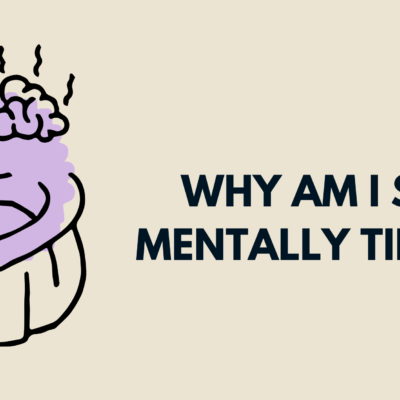How to Reprogram Your Mind for Positive Thinking: The way you think determines the way you live. If your mind is filled with negative beliefs, self-doubt, and fear-based thinking, life will feel heavier, harder, and more hopeless than it truly is. But if your mind leans toward hope, possibility, and inner calm, you’ll find strength even in life’s storms.
The good news? Your brain is neuroplastic — which means it can be reshaped and reprogrammed. No matter your past or your default thought patterns, you can train your mind to think more positively, consciously, and compassionately.
This article will guide you through practical and powerful steps to reprogram your mind for positive thinking — not through toxic positivity, but through grounded, conscious transformation.
Also Read:
Why Reprogramming Your Mind Matters
Many of our beliefs, reactions, and thoughts are shaped early in life — by our environment, experiences, and the voices we heard most often (parents, teachers, society). Over time, these mental patterns become automatic.
Examples of these deeply ingrained negative programs might include:
- “I’m not good enough.”
- “Things never work out for me.”
- “I always mess things up.”
- “The world is unsafe.”
- “No one really cares.”
These scripts become the lens through which we view life — often subconsciously. Reprogramming your mind is the process of consciously changing those scripts, so you can live with more peace, joy, clarity, and courage.
1. Identify the Negative Programs
You can’t change what you don’t see.
Begin by becoming aware of the dominant thought patterns that shape your mind daily. These often come in the form of:
- Automatic thoughts: The things you tell yourself without realizing it.
- Self-talk: The way you internally speak to yourself.
- Beliefs: Deep-seated assumptions about yourself, others, and the world.
Reflection exercise:
Take a pen and write down recurring negative thoughts. Ask yourself:
- What do I usually think when something goes wrong?
- How do I speak to myself when I fail?
- What belief is behind this thought?
Examples:
- Thought: “I always screw things up.”
Belief: “I’m a failure.” - Thought: “They probably don’t like me.”
Belief: “I’m not lovable.”
The goal is not to judge these thoughts — it’s to bring them into awareness.
2. Challenge and Question the Negative Beliefs
Once you’ve identified your limiting thoughts or beliefs, the next step is to question their truth. Most of the time, we believe them simply because we’ve repeated them often — not because they’re facts.
Ask yourself:
- Is this belief 100% true in all situations?
- Where did I learn this?
- What evidence do I have that contradicts this belief?
- What would I say to a friend who thought this?
“Don’t believe everything you think.”
For example:
If you think “I’m not good enough,” ask — good enough for what? According to whose standards? What if you’ve always been enough, even when you’re learning and growing?
3. Replace the Old Script with a New One
Your brain creates pathways based on repetition. The more often you think something, the more your brain wires it in. This means to reprogram your mind, you need to replace old thoughts with new, empowering ones — again and again.
These are called affirmative statements or new thought patterns.
Examples of reprogramming thoughts:
- Old: “I’m not lovable.”
New: “I am worthy of love exactly as I am.” - Old: “I can’t do this.”
New: “I’m learning. I don’t have to be perfect — just willing.” - Old: “Things never work out for me.”
New: “I trust that even setbacks are shaping me.”
Write 5–10 positive, empowering beliefs that feel plausible (not fake). Repeat them to yourself — aloud, in writing, or silently — every day.
4. Use Visualization to Reinforce New Beliefs
Your brain doesn’t distinguish much between real and vividly imagined experiences. Visualization activates the same neural circuits as real actions.
How to practice:
- Close your eyes.
- Visualize yourself as the version of you who already believes the new thought.
- Feel it. Embody it.
- For example, visualize yourself walking confidently, smiling, being loved, succeeding, feeling at peace.
The more often you “see” yourself as this version, the more your mind starts to believe it.
5. Practice Gratitude Daily
Gratitude rewires your brain for positivity. When you focus on what’s going wrong, your brain strengthens that focus. But when you intentionally shift your focus to what’s going right, even in small ways, your brain starts to change.
Daily gratitude practice:
- Write down 3 things you’re grateful for each morning or night.
- They can be small: “Warm cup of tea,” “A kind message,” “My breath.”
- Say them with feeling.
Over time, your mind becomes trained to notice blessings rather than burdens.
6. Limit Negative Inputs
If you’re trying to reprogram your mind but constantly feed it negativity — toxic news, drama-filled content, judgmental people — it’s like planting flowers and watering them with poison.
What to reduce:
- Doomscrolling or news that amplifies fear
- Social media that triggers comparison or hopelessness
- Conversations with people who constantly complain or criticize
What to increase:
- Inspirational books, videos, podcasts
- People who uplift and challenge you to grow
- Nature, stillness, music, movement
You become what you consume — mentally, emotionally, and spiritually.
7. Use Repetition and Consistency
Reprogramming your mind is not a one-time change — it’s a daily practice. Just like going to the gym builds physical strength over time, mental reprogramming builds new neural pathways through consistency.
Make it a daily routine:
- Morning affirmations (spoken or written)
- Daily gratitude journal
- Catching and redirecting negative thoughts
- Nighttime visualization before sleep
Even 5–10 minutes a day can create deep change over months.
8. Surround Yourself with Growth-Minded People
Environment is a powerful force. Being around people who uplift, support, and inspire you makes it much easier to think positively and stay committed to growth.
Ways to do this:
- Join support groups, book clubs, or communities focused on personal development
- Spend more time with friends who are compassionate and self-aware
- Limit time with people who drain or discourage you (where possible)
“You are the average of the five people you spend the most time with.”
9. Forgive Yourself for Old Patterns
Sometimes, when we realize how long we’ve lived in negative thinking, we feel regret or shame. But beating yourself up doesn’t lead to change — self-compassion does.
Practice saying:
- “I did the best I could with what I knew.”
- “I’m learning and growing — that’s what matters.”
- “I’m allowed to start again.”
Reprogramming your mind for positivity includes how you speak to yourself when you fail or fall short. Be gentle. That’s how you create a safe inner space for transformation.
10. Make It Spiritual (Optional)
If you’re spiritually inclined, bring your beliefs into the process. Whether you believe in God, the Universe, Higher Self, or Source — align your new thinking with your faith.
Example spiritual affirmations:
- “I am guided and supported by a higher power.”
- “Everything is happening for my highest good.”
- “I trust the divine timing of my life.”
This can add a sense of meaning, surrender, and peace to the process — especially during setbacks.
Common Myths About Positive Thinking
Let’s clear a few things up.
Myth: Positive thinking means ignoring problems.
Truth: It means facing problems with a mindset of possibility and resilience.
Myth: It’s fake to say affirmations you don’t fully believe.
Truth: You can practice thinking better thoughts — they will feel more true over time.
Myth: Some people are just naturally negative.
Truth: Thought patterns are habits. Habits can be changed.
Final Thoughts: You Are Not Your Thoughts — You Are the Thinker
Your mind is like a garden. If left unattended, weeds will grow — old fears, doubts, and negativity. But if you plant new seeds, water them daily, and pull out the weeds gently but consistently, you’ll cultivate a beautiful inner space.
Reprogramming your mind is not about pretending everything is perfect.
It’s about learning to direct your thoughts consciously.
It’s about speaking kindly to yourself when life gets hard.
It’s about choosing hope when your old story wants to drag you back.
Your thoughts create your reality. And you — yes, you — have the power to rewrite the script.
Ready to begin? Start today with one simple practice:
Catch one negative thought and choose a better one.
That’s how the shift begins — one thought, one breath, one belief at a time.






